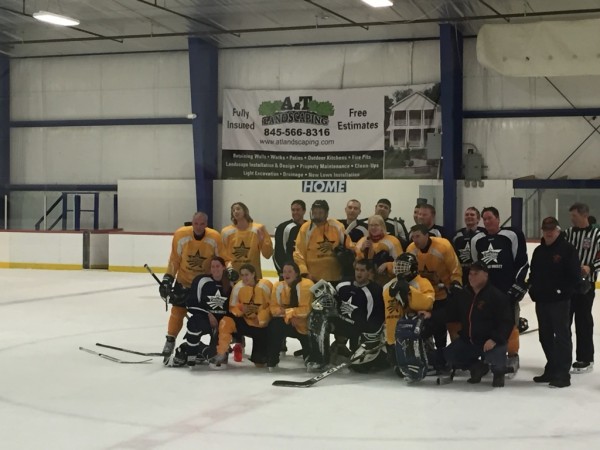
There could be a new Paralympic sport on the horizon: blind ice hockey.
This co-ed parasport originated in Canada in 1972 by the first-ever blind team named the Toronto Ice Owls. The Montreal Hiboux were the second blind ice hockey team, formed in 1978 and are still playing to this day.
Closer to home, the New York Nightshade blind ice hockey team was established in 2013. This team was formed in collaboration with Courage USA, a nonprofit blind ice hockey organization whose goal was to “provide blind and visually impaired communities across the country with the opportunity to learn and play the sport of blind ice hockey,” according to the organization’s website.
Recently, Courage USA has been blanketed by USA Hockey in an effort to further create awareness of this rising parasport and the New York Nightshade has officially been recognized as a USA Hockey association.
Courage Canada, the “mother” organization to Courage USA, was founded in 2008 by Mark Demontis, who at the time was only 18 years old. A year earlier, Demontis was diagnosed with an eye condition that slowly began to deteriorate his vision, which influenced him to first create the organization.
Courage USA co-founder and New York Nightshade player Kevin Shanley, an associate professor of mechanical engineering at SUNY New Paltz, began to lose his vision at age 6. His other co-founder and co-player Christine Osika, began to lose her vision as a teen and interned with Courage Canada after college. The duo were appointed president and vice president, respectively.
A common factor between Demontis, Shanley and Osika has been their determination to continue playing hockey, a passion they had all enjoyed growing up and continue to enjoy today despite playing with impaired vision.
“The players prove that even if you have a visual impairment you can still play the game,” Demontis said. “It’s still the great game we all love.”
Demontis said that blind ice hockey is similar to traditional hockey aside from a few major modifications, such as having visually impaired players and playing with a slow, loud noise-making puck.
Some other minor rule modifications include the fact that blind ice hockey players must begin faceoffs with the puck on the ice and can only touch it on the referee’s whistle, making the game a competition of reaction time and not favoring the player with better vision. In addition, goals may only be scored in the bottom three feet of the net because the puck does not make noise in the air, which could pose a disadvantage to the goalie if goals are made in the top of the net; among other rules.
Those who are sighted can also play blind ice hockey, but they are prohibited from making any goals or playing in tournaments.
On Oct. 24 and 25, the New York Nightshade hosted the Montreal Hiboux at the second annual Blind Ice Hockey Summit at the Newburgh Ice Time Sports Complex.
Demontis said that the goal of this event was to set another opportunity for people who are blind and partially sighted to come together, try the sport of blind ice hockey and evolve the sport to have more people play nationwide and internationally.
Craig Fitzpatrick traveled all the way from Washington, D.C. to play in this event: his first-ever blind ice hockey game.
He said that he has only played hockey for a year and that he has used it to help his vision, mobility and confidence.
“To be around people in a locker room after a game is probably my favorite part,” Fitzpatrick said. “It’s harder to get around when you start losing some of your vision and social interactions get more difficult, but team sports are a great way to help with confidence.”
Fitzpatrick was surprised by the amount of players with visual impairments at the Summit and enjoyed being around people with whom he could relate.
“I’m the only blind guy I know who plays hockey in D.C. and here, I’m around 15 to 20 other people similarly situated to where I am in a small town in New York,” Fitzpatrick said. “It just makes me think about how many possibilities there must be in the rest of the country for [blind ice hockey] to really take off.”
Demontis feels that at this year’s Summit, there has been more energy, support, passion, as well as a more focused direction toward where the sport is going. A larger sense of camaraderie and siblinghood has developed over the past year within the blind ice hockey community, he added.
“The people here use hockey as a catalyst to better their own lives, meet new people, make new friends and do something new,” Demontis said. “I look forward to the fact that together we are breaking down barriers and motivating each other. And at the end of the day, the number one thing that everyone has in common here is vision, but most importantly, their love for hockey.”
Future blind ice hockey events will include the Canadian National Blind Hockey Championship from March 11-13 in Toronto (Americans are welcomed and encouraged) as well as the USA Hockey Disabled Hockey Festival in Detroit, Michigan from April 7-10.
